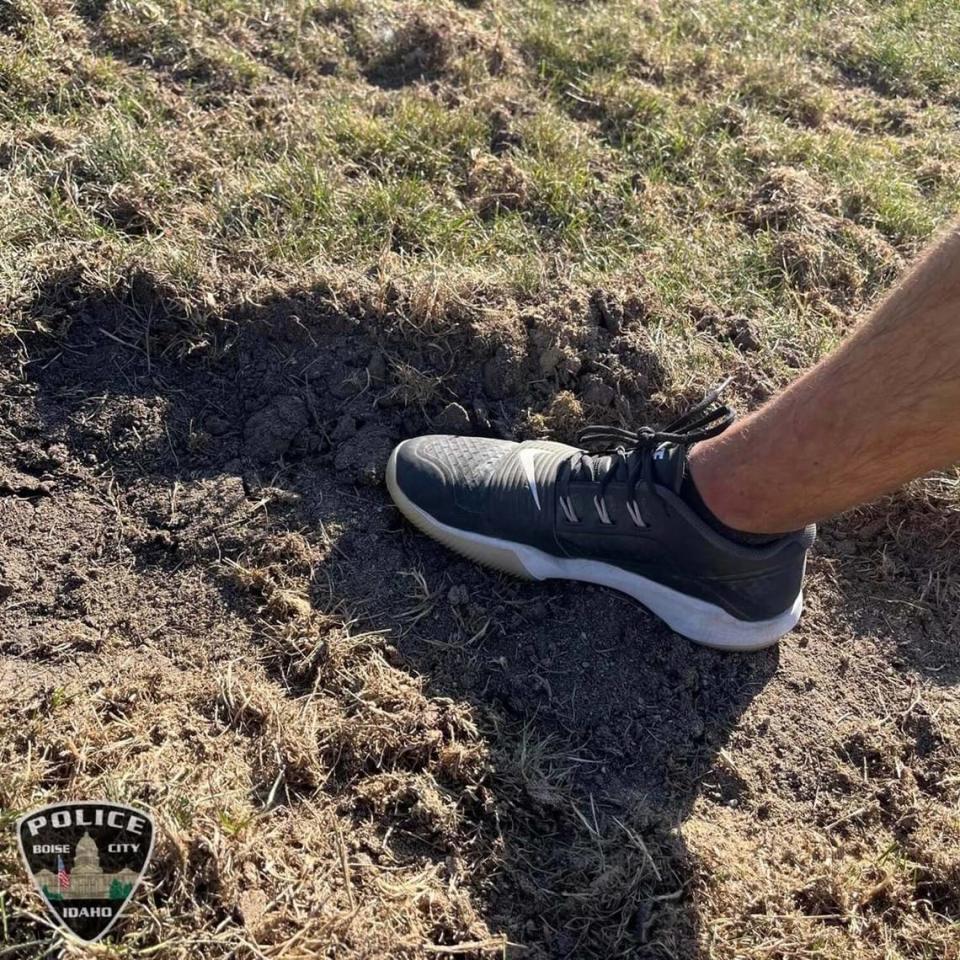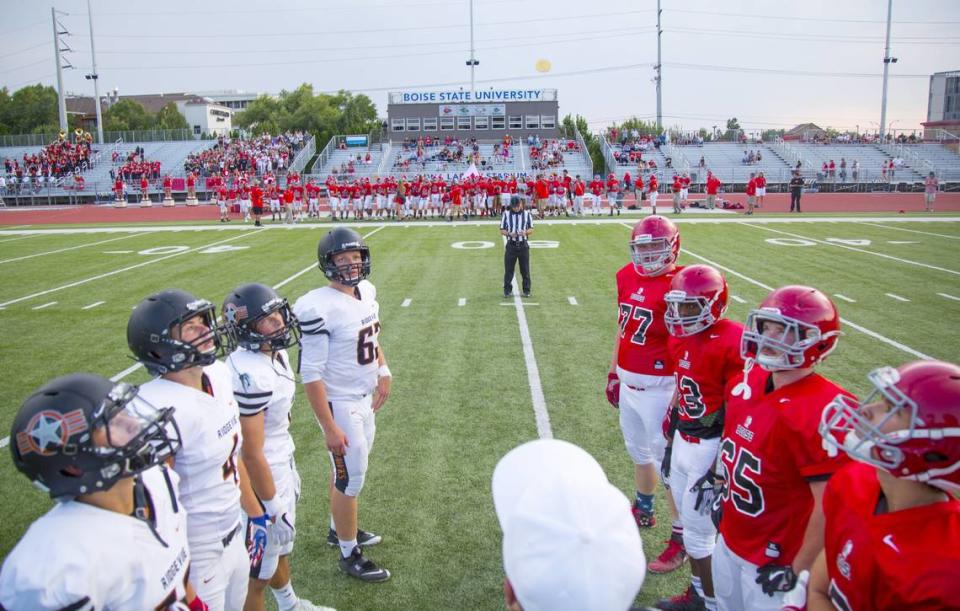Boise Schools spending $7.9 million on new sports fields. What will that money buy?
Three Boise School District projects totaling nearly $7.9 million will bring artificial turf fields to Boise and Capital high schools, upgrade the tracks at both schools and build Capital a new soccer complex.
But don’t expect to see varsity football games on a Boise high school campus anytime soon.
The projects will upgrade the on-campus practice and subvarsity football fields at Boise and Capital to artificial turf. Those fields still lack the bleachers needed for a varsity football game, so Boise and Capital will continue to share Dona Larsen Park in Downtown Boise with Borah and Timberline.
Boise School District spokesperson Ryan Hill said the turf fields are not a first step to on-campus stadiums. He added that a project of that size likely would require voter approval of a bond.
“We are not even at phase one, step one-half of doing what we would need to do to build a stadium at any high school,” Hill said. “That’s going to be a multiyear process involving all kinds of stakeholders.”

CAPITAL REPLACING DAMAGED FIELD
Two 18-year-olds tore up Capital’s grass football field with their cars last September, leaving the site unplayable and forcing Capital’s football team off the field for the rest of the season.
Hill said repair estimates ran between $300,000 and $350,000. Other Idaho schools have installed artificial turf for $500,000 to $600,000 in recent years.
The turf comes as part of a $1.63 million project at Capital, which also includes upgrades to the school’s track, paving the space behind the end zones and moving its jump pits there.
John Ruzicka, athletic director for the Boise School District, said artificial turf provides schools a field they can use more often, including for physical education classes, band practices and community events.
“Before with grass, you had to protect it a bit so you don’t get into a rain game and get a big mud mess,” Ruzicka said. “It’s not just one thing. It’s looking at many things to help our schools.”
Hellas Construction must finish the field by Aug. 4, three days before the start of football practice. Hellas has built a series of artificial turf fields in Idaho recently, including ones at the University of Idaho, Idaho State University, and Middleton, Pocatello, Idaho Falls, Madison and Sandpoint high schools.
Both of the 18-year-olds who damaged Capital’s field were sentenced to 160 hours of community service and to pay $28,539.50 in restitution, court records show.
BOISE GETS TURF WHILE OVERHAULING TRACK
Construction is already underway at Boise High on a $4.69 million project centered on an overhaul of the school’s track, expanding it from six to eight lanes. The project comes with a July 14 finish date.
Boise High is fundraising $500,000 for an artificial turf field from Hellas. The school has raised approximately $300,000, Boise Principal Robb Thompson said. Boise will continue to raise funds and repay the district for covering the missing amount, Hill said.
“We are committed to that and will get to that amount one way or another,” Thompson said. “It might take a little longer than we’d hoped.”
The school will use the field for football practices, subvarsity football games, lacrosse, physical education classes and, occasionally, soccer. Boise opened a soccer complex at Fort Boise in 2018. Its grass fields will remain the school’s primary soccer home, Boise High AD Brian Barber said.
The on-campus track and turf field will include bleachers for 500. No more bleachers can fit between Washington and Franklin streets in Downtown Boise.
“That’s about right for a track meet or a subvarsity football game,” Barber said. “But it’s not a Dona Larsen Park as far as seating goes.”
Dona Larsen Park seats 5,200.
CAPITAL ADDING SOCCER COMPLEX
Capital also plans to open a new $1.5 million soccer field for its boys and girls teams this fall.
Construction has started to convert land the school district owns at Fairmont Park into a practice and performance field. Both fields will be grass. The complex will include bleachers for 210 fans and a concession stand, according to plans.
Boise Parks and Recreation will continue to run the pool, tennis courts, parking and playground area at Fairmont Park.
Capital’s soccer teams previously played at Milwaukee Park next to the school, over the top of youth baseball fields.

WHY DON’T BOISE SCHOOLS HAVE FOOTBALL STADIUMS?
Boise’s four public high schools never built full stadiums because they traditionally played their varsity games at a Boise State facility. Boise High moved into what’s now Albertsons Stadium in 1953. Borah, Capital and Timberline all followed when they opened.
The four high schools moved to Dona Larsen Park in 2012 after renovations at Albertsons Stadium. The smaller stadium does not host doubleheaders like Albertsons Stadium used to, forcing teams to regularly play on Thursdays and Saturdays. And a lack of parking remains a sore spot for fans.
The Boise School District rents Dona Larsen Park from Boise State for approximately $100,000 a year. A credit left over from a previous land swap covers that fee. That credit will run out during the 2025 season.
But the Boise School District’s rental rate ($80,000 a year) is contractually guaranteed through 2037, the Idaho Statesman previously reported. It spends approximately $20,000 a year for parking and security.

